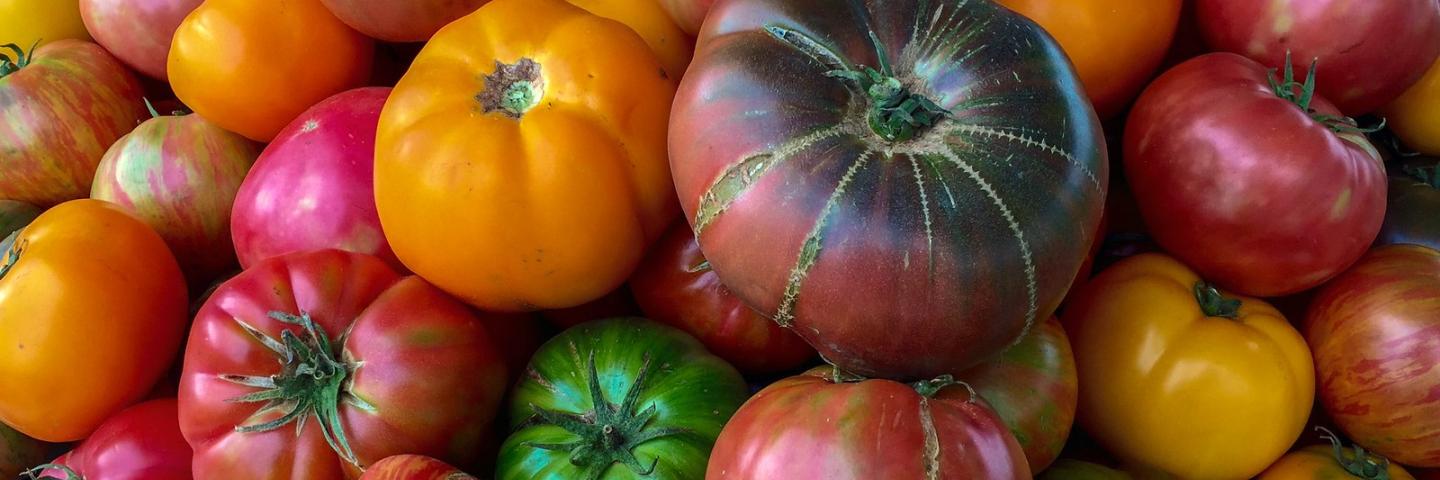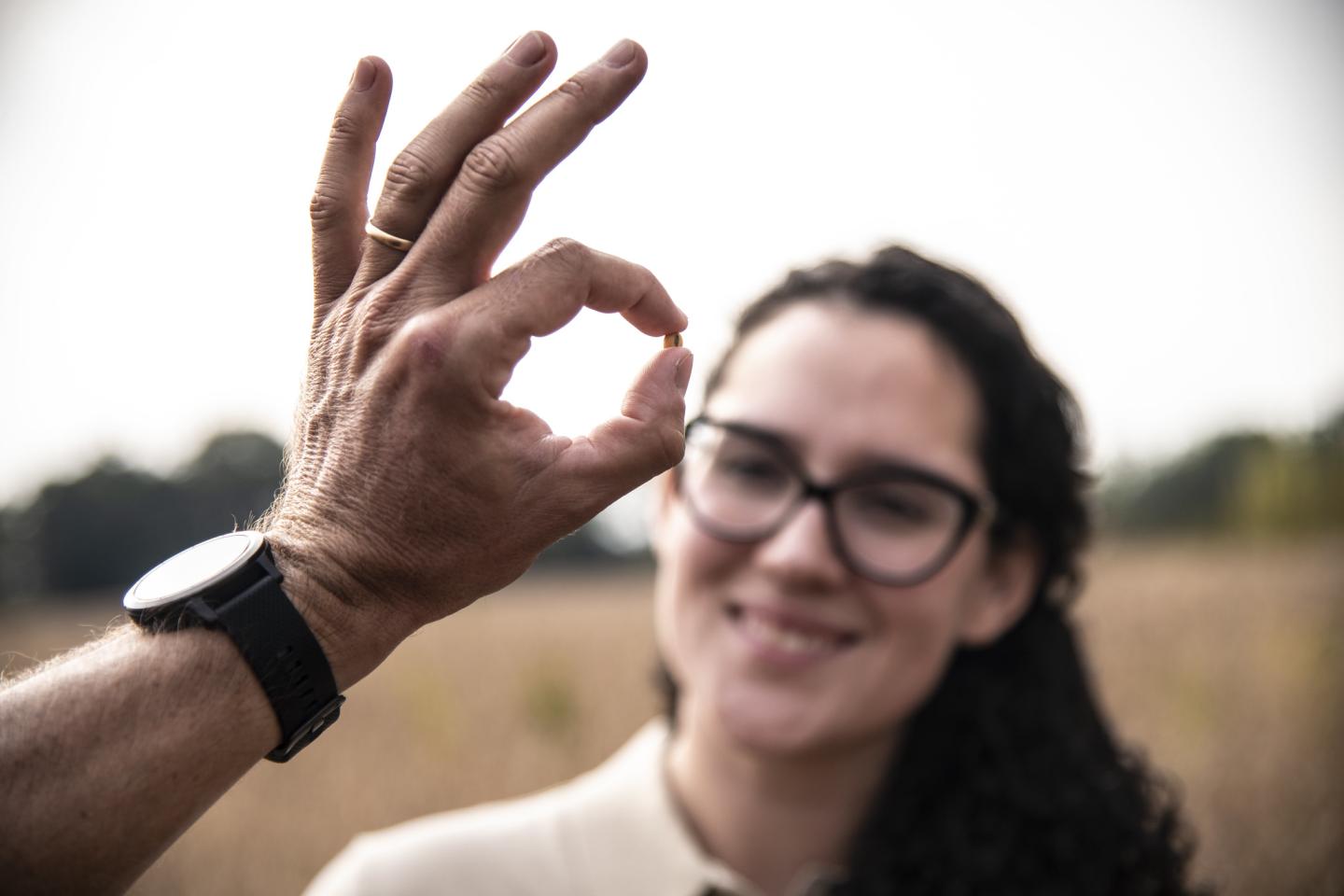
The organic initiative is a voluntary conservation program that provides technical and financial assistance for organic farmers and ranchers, or those interested in transitioning to organic.
NRCS can help organic producers improve their operations or help producers transition to organic using a conservation plan tailored to their needs. Organic producers may apply to either EQIP or EQIP’s Organic Initiative. The EQIP Organic Initiative has a smaller ranking pool, and cap on funding.
Eligibility:
- Certified Organic - producers with a USDA National Organic Program (NOP) Organic Certificate or proof of good standing from a USDA accredited certifying agent. The certification must be maintained for the life of the EQIP contract.
- Exempt from Certification of the NOP - producers who are selling less than $5,000 a year in organic agricultural products and are exempt from NOP’s certification. Exempt organic producers are eligible for the EQIP Organic Initiative if they self-certify that they agree to develop and work toward implementing an Organic Systems Plan (OSP), as required by the NOP.
- Transitioning to Organic - producers who are in the process of transitioning to organic. Transitioning producers self-certify that they agree to develop and work toward implementing an OSP, as required by the NOP.
Assistance begins with the development of a conservation plan based on a needs assessment and each farmer’s unique goals. The plan includes conservation practices, systems or activities, and the resource concerns identified in the assessment.
Common conservation practices, systems or activities planned include:
- Improving irrigation efficiency;
- Developing a Conservation Activity Plan for Transition that can be part of the OSP;
- Establishing buffer zones;
- Creating pollinator habitat;
- Improving soil health and controlling erosion;
- Developing a grazing plan and supportive livestock practices;
- Enhancing cropping rotations;
- Nutrient and pest management activities;
- Managing cover crops; and
- Installing a high tunnel system.
Additional information about the Organic Initiative:
- Financial assistance is limited to no more than $140,000 total over the 2018 Farm Bill years, 2019 through 2023.
- Producers must meet all other eligibility requirements associated with EQIP
- Participants who are not certified or exempt from certification, agree to develop and work towards implementing an Organic System Plan to meet National Organic Program organic certification through USDA
Although EQIP supports a wide variety of conservation practices, your local NRCS field office staff will work with you to develop an organic plan that includes practices that fits your resource needs as part of the Organic Initiative. Organic and transitioning farmers and ranchers may also apply for assistance through general EQIP or other conservation initiatives.
Ready to improve your organic operation or transition to organic? Learn how to apply for EQIP.
Additional Information

NRCS resources for organic farmers
For more information about NRCS resources for organic farmers, see the Organic Farming web page.
Oregon's Organic Initiative
Counties: Baker, Benton, Clackamas, Clatsop, Columbia, Coos, Crook, Curry, Deschutes, Douglas, Gilliam, Grant, Harney, Hood River, Jackson, Jefferson, Josephine, Klamath, Lake, Lane, Lincoln, Linn, Malheur, Marion, Morrow, Multnomah, Polk, Sherman, Tillamook, Umatilla, Union, Wallowa, Wasco, Washington, Wheeler, Yamhill
Primary Resource Concern Addressed
- Degraded Plant Condition
- Field Sediment, Nutrient and Pathogen Loss
- Soil Quality Limitations
Purpose
The organic initiative is a voluntary conservation program that provides technical and financial assistance for organic farmers and ranchers, or those interested in transition to organic. NRCS can help organic producers improve their operations or help producers transition to organic using a conservation plan tailored to their needs.
- Certified Organic – producers with a USDA National Organic Program (NOP) Organic Certificate or proof of good standing from a USDA accredited certifying agent. The certification must be maintained for the life of the EQIP contract.
- Exempt for Certification of the NOP – producers who are selling less than $5,000 a year in organic agricultural products and are exempt from NOP’s certification. Exempt organic producers are eligible for the EQIP Organic Initiative if they self-certify that they agree to develop and work toward implementing an Organic Systems Plan (OSP), as required by the NOP.
- Transition to Organic – producers who are in the process of transition to organic. Transitioning producers self-certify that they agree to develop and work toward implementing an OSP, as required by the NOP.
Conservation Practices Offered:
All conservation available in Oregon’s FY23 payment schedule are offered under the organic initiative.
Payments
The 2018 Farm Bill payment limitation for the organic initiative is $140,000.
Application Questions
NRCS uses prioritization questions to evaluate applications for this initiative. See the list of workload prioritization questions on the Oregon EQIP page. Ranking questions below will also apply.
Ranking Questions
- Does the EQIP schedule of operations include implementation of practices for the management of noxious an invasive species only on noncropland acreage?
- Does the EQIP schedule of operations include practices with the intent of increasing habitat for pollinators, beneficial insects, or both?
- Does the EQIP schedule of operations include practices that will improve wildlife habitat?
- Does the EQIP schedule of operations include practices that will improve the efficiency of an existing irrigation system, conserve soil moisture, or both?
- Does the EQIP schedule of operations include implementation of practices to improve the management of plant species, livestock, residues, feed, and other identified source needs?
- Does the EQIP schedule of operations include implementation of practices that limit and manage domestic livestock access to streams, creeks, and other natural water bodies?
- Does the EQIP schedule of operations include implementation of practices to assure adequate domestic livestock drinking water sources (not including streams) are available in the treatment unit?
Related Information
Apply for Environmental Quality Incentives Program (EQIP)
The Environmental Quality Incentives Program (EQIP) provides financial and technical assistance to agricultural producers and non-industrial forest managers.
Learn MoreReady to get started?
Contact your local service center to start your application.
How to Get Assistance
Do you farm or ranch and want to make improvements to the land that you own or lease?
Natural Resources Conservation Service offers technical and financial assistance to help farmers, ranchers and forest landowners.

To get started with NRCS, we recommend you stop by your local NRCS field office. We’ll discuss your vision for your land.
NRCS provides landowners with free technical assistance, or advice, for their land. Common technical assistance includes: resource assessment, practice design and resource monitoring. Your conservation planner will help you determine if financial assistance is right for you.
We’ll walk you through the application process. To get started on applying for financial assistance, we’ll work with you:
- To fill out an AD 1026, which ensures a conservation plan is in place before lands with highly erodible soils are farmed. It also ensures that identified wetland areas are protected.
- To meet other eligibility certifications.
Once complete, we’ll work with you on the application, or CPA 1200.
Applications for most programs are accepted on a continuous basis, but they’re considered for funding in different ranking periods. Be sure to ask your local NRCS district conservationist about the deadline for the ranking period to ensure you turn in your application in time.
As part of the application process, we’ll check to see if you are eligible. To do this, you’ll need to bring:
- An official tax ID (Social Security number or an employer ID)
- A property deed or lease agreement to show you have control of the property; and
- A farm number.
If you don’t have a farm number, you can get one from USDA’s Farm Service Agency. Typically, the local FSA office is located in the same building as the local NRCS office. You only need a farm number if you’re interested in financial assistance.
NRCS will take a look at the applications and rank them according to local resource concerns, the amount of conservation benefits the work will provide and the needs of applicants. View Application Ranking Dates by State.
If you’re selected, you can choose whether to sign the contract for the work to be done.
Once you sign the contract, you’ll be provided standards and specifications for completing the practice or practices, and then you will have a specified amount of time to implement. Once the work is implemented and inspected, you’ll be paid the rate of compensation for the work if it meets NRCS standards and specifications.

